Gateway to Mithila: Unraveling the Timeless Tapestry of Darbhanga, Bihar
Where Palaces Whisper History, Temples Echo Devotion, and Mithila’s Heart Beats Strong
🔴 Introduction: The Soul of Mithilanchal
Nestled in North Bihar’s fertile plains, Darbhanga isn’t just a city—it’s a living museum. As Bihar’s fifth-largest urban hub, it pulses with a unique rhythm where 16th-century palaces stand beside bustling universities, and dhrupad music floats from temple courtyards. Known as the “Cultural Capital of Bihar” and “Heart of Mithila”, Darbhanga’s name sparks debate: some say “Darbhanga” derives from Dwar Banga (Door of Bengal), while others credit a shadowy figure, Darbhangi Khan. Yet beyond etymology lies a richer truth: this is where Maithili language, art, and devotion converge.
The city’s skyline tells its story. Twin universities—Lalit Narayan Mithila University and Kameshwar Singh Darbhanga Sanskrit University—nest within the former palaces of the Raj Darbhanga dynasty, once India’s wealthiest Zamindars. Walk its streets, and you’ll find Kali Temples rising from royal cremation grounds, Mughal-inspired gardens, and lakes teeming with migratory birds. Modernity brushes against tradition here: a new airport now connects Darbhanga to Delhi and Kolkata, while an upcoming Metro line (2029) promises to transform its commute.
But Darbhanga’s true magic lies in its people. With a population of 3.9 million (2011 Census), the district is a tapestry of Maithili-speaking communities, where Hindus (78.7%) and Muslims (21.2%) coexist, celebrating festivals like Vivah Panchami and Ramzan with shared fervour. As one local scholar told us, “Our heritage isn’t in stone alone—it’s in the songs of Vidyapati we sing while planting rice”.
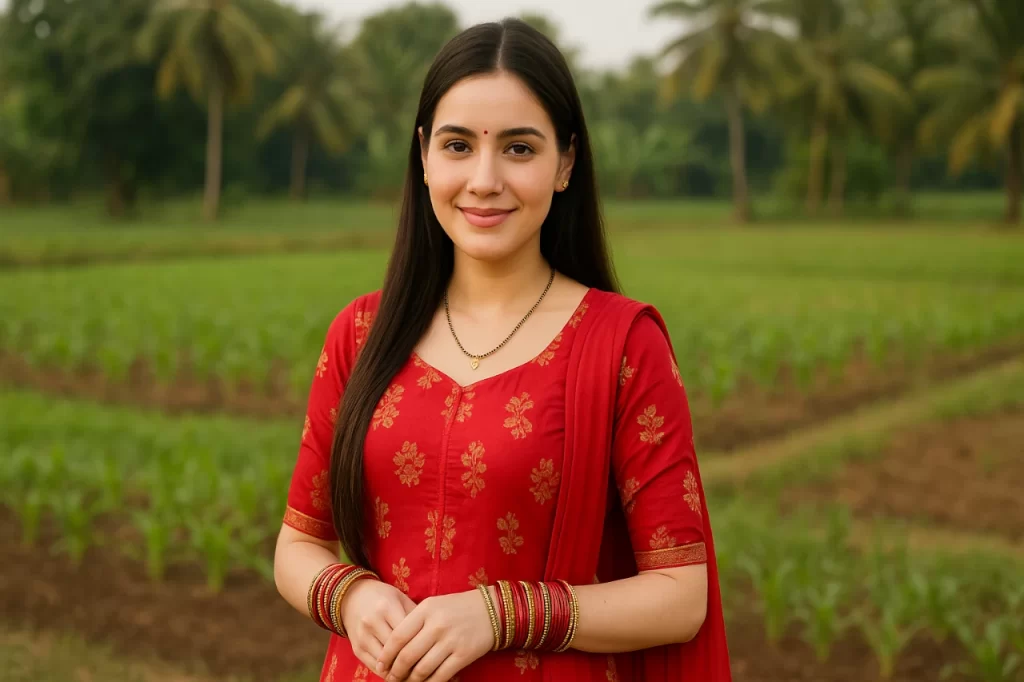
Darbhanga, Bihar: The Heartbeat of Mithila
🟢 Detailed Introduction: Where Heritage Breathes and Culture Thrives
Nestled in the fertile floodplains of North Bihar, Darbhanga (pop. ~3.9 million) stands as the “Cultural Capital of Bihar” and the “Heart of Mithila”. Founded in the 16th century as the seat of the Raj Darbhanga dynasty, this city harmonies ancient traditions with modern aspirations. Its name sparks scholarly debate: some derive it from Dwar Banga (Gateway to Bengal), while others attribute it to the obscure figure Darbhangi Khan. Archaeologically, its roots stretch deeper—excavations at Balirajgarh reveal brick fortifications from the 2nd century BCE, anchoring it among India’s oldest continuously inhabited cities.
Darbhanga’s landscape is a Palimpsest of Empires. Under Mughal patronage, the Khandavala dynasty transformed it into a centre of Sanskrit scholarship and governance. The British later designated it a municipality in 1864, cementing its role as North Bihar’s administrative nucleus. Today, its skyline juxtaposes Indo-Saracenic Palaces with emerging infrastructure: the AIIMS Darbhanga (under construction) and the Darbhanga Metro (18.8 km line with 18 stations, slated for 2029).
➤ Cultural and Spiritual DNA
Darbhanga pulses with Maithili culture—a symphony of Dhrupad Music, Madhubani Paintings and Sanskrit Scholarship. The Darbhanga Gharana has produced legends like Pt. Ramchatur Mallik, while universities like Kameshwara Singh Darbhanga Sanskrit University (1961) preserve ancient texts. Religiously, it Embraces Syncretism: the Shyama Kali Temple (built on Maharaja Rameshwar Singh’s cremation site) draws Hindu and Muslim devotees alike, echoing at the Mazar of Makhdoom Baba, a Sufi shrine revered across faiths.
➤ Economic Backbone: Agriculture and Aspirations
The district’s 2,279 Sq. Km Alluvial Plain Yields Mangoes, Makhana (Foxnuts), Rice and Sugarcane. Darbhanga’s Bazaars trade these alongside Handicrafts like Sikki Grass Baskets. Industrialisation remains nascent, dominated by Food Processing Units and Textile Weaving, though the upcoming Amas–Darbhanga Expressway (NH 119D) promises economic revitalisation.
➤ Demographic Tapestry
⦿ Population: 3,937,385 (2011 Census)
⦿ Gender Ratio: 910 females per 1,000 males
⦿ Literacy Rate: 44% (below state average)
⦿ Languages: Maithili (Primary), Hindi, Urdu
⦿ Religions: Hindu (78.7%), Muslim (21.2%)
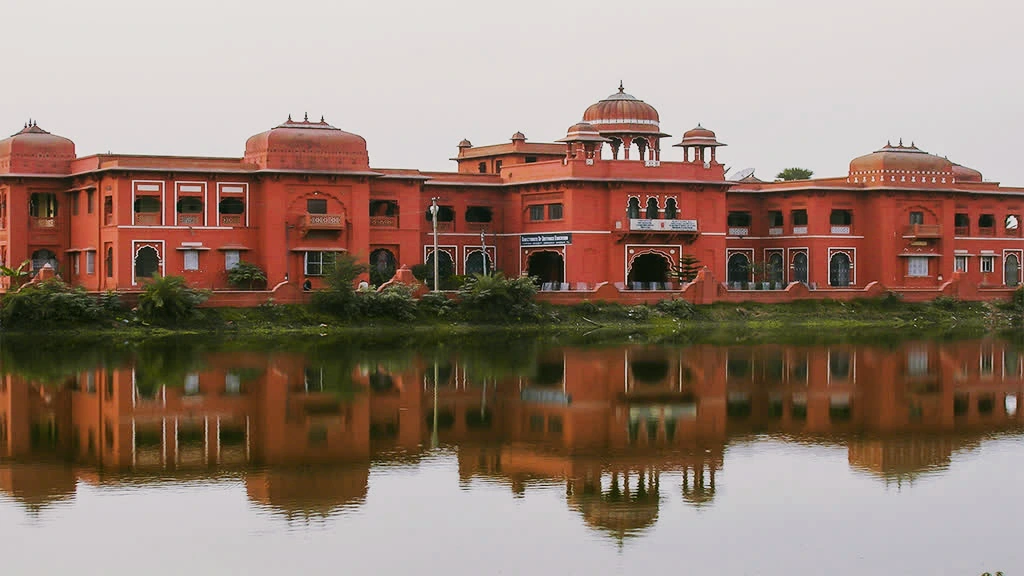
🟣 Detailed Section Breakdown
⭕ History: From Mughal Estates to Modern Metropolis
➸ Origins: Founded in 1557 by Mahesh Thakur, a scholar-king appointed by Akbar to govern Mithila. His dynasty, the Khandavala, ruled semi-independently under Mughals and British.
➸ Golden Age: Maharaja Lakshmeshwar Singh (1858–1898) transformed Darbhanga—building hospitals, railways, and the iconic Anandbagh Palace. A bronze statue honoring him still stands in Kolkata.
➸ Post-Independence: The zamindari system’s abolition (1947) ended royal rule, but the Darbhanga Raj’s legacy lives through universities and museums.
Also Read
Jalna, Maharashtra – Where Marathwada Region’s History Meets Modernity
⭕ Architecture: Where Indo-Saracenic Dreams Soar
➨ Royal Palaces:
➸ Nargauna Palace: Blend of Rajput and Gothic styles, now part of L.N. Mithila University. Note the Belgian glass windows and marble courtyards.
➸ Rambagh Palace (Darbhanga Fort): 85-acre complex with a rare Silver bed and Gold – inlaid Throne in its museum.
➨ Sacred Spaces:
➸ Shyama Kali Temple: Built in 1933 on Maharaja Rameshwar Singh’s cremation site. The black-stone Kali idol draws thousands daily.
➸ Ahilya Asthan: 3,000-year-old temple marking Sage Gautam’s ashram, where Lord Rama “freed” Ahalya from stone.
⭕ Cultural Tapestry: Music, Art, and Maithili Soul
➸ Dhrupad Tradition: Since the 18th century, Darbhanga Gharana Maestros like Pt. Ramchatur Mallik elevated classical music.
➸ Madhubani Art: Villages near Darbhanga preserve this 2,500-year-old folk art. Buy authentic pieces at Laheriasarai Market.
➨ Festivals:
➸ Dussehra at Nawadah Durga-sthan: Goddess Durga’s temple dazzles with 10,000 oil lamps.
➸ Shivratri at Kusheshwar Asthan: Pilgrims throng the Shiva temple and bird sanctuary.
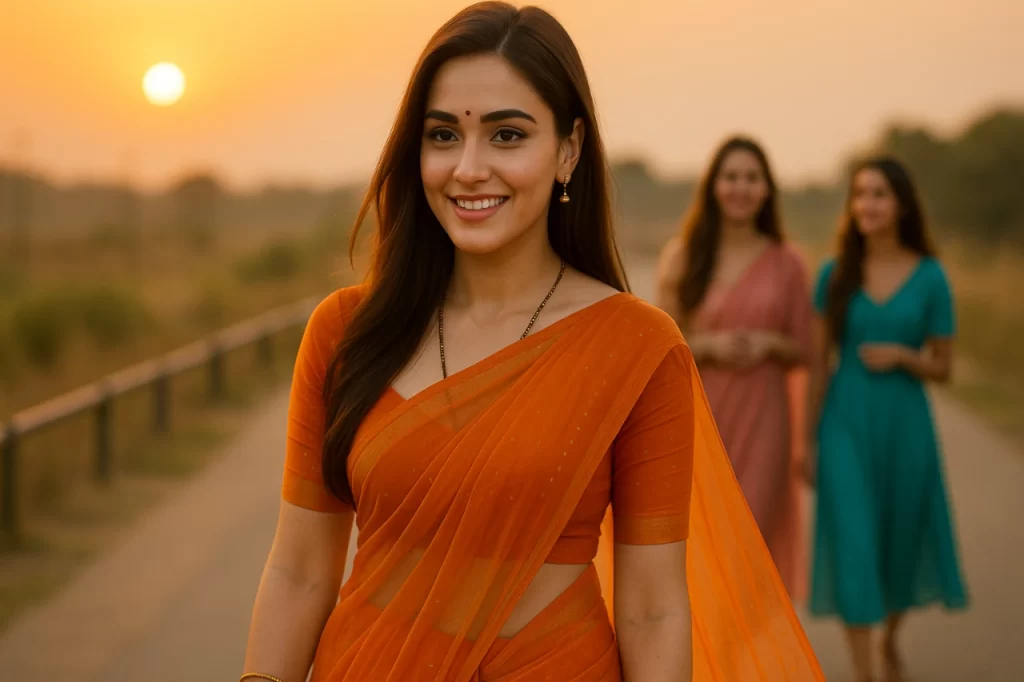
⭕ Travel Essentials
➨ Best Time: October–February (winter, 8°C – 25°C). Avoid May (43°C) or monsoons (July–September).
➨ How to Reach:
➸ Air: Darbhanga Airport (DBR) connects to Delhi, Mumbai, Kolkata.
➸ Rail: Darbhanga Junction (daily trains from Delhi, Kolkata).
➸ Road: NH27 (Porbandar-Silchar) passes through the city.
➨ Local Cuisine: Try Makhana Kheer (Foxnut Pudding), Chuda-dahi (Flattened Rice with Yogurt) and Mustard-spiced Fish.
⭕ Distance from Major Cities
| City | Distance (km) |
| Madhubani | 39 km |
| Muzaffarpur | 62 km |
| Patna | 145 km |
| Varanasi | 385 km |
| Kolkata | 585 km |
| Delhi | 1190 km |
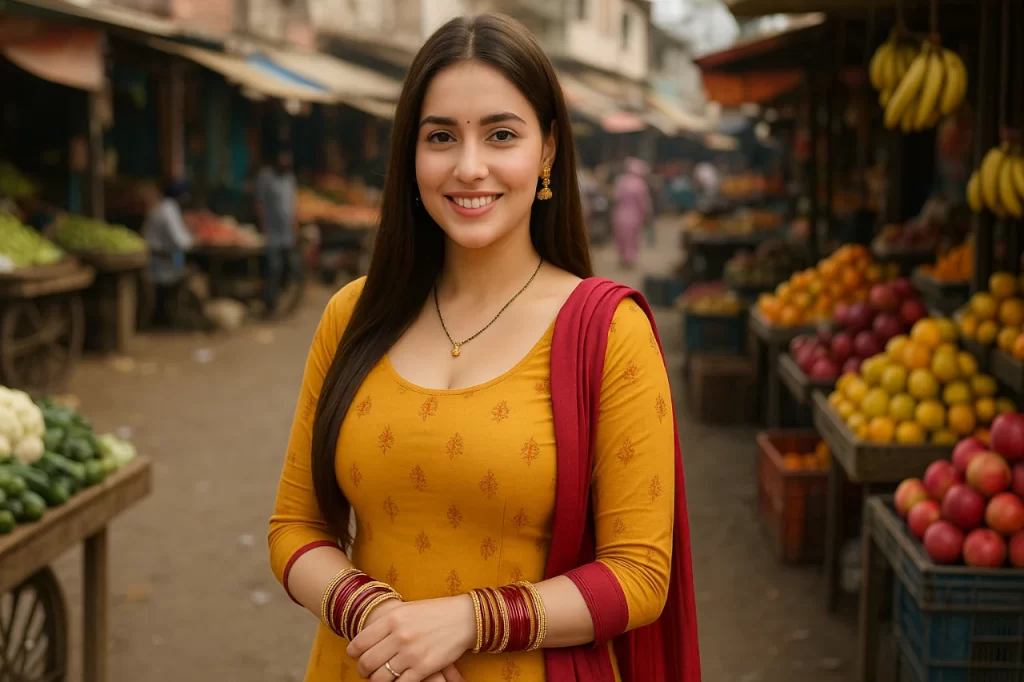
🟡 Deep Dive: Granular Details & Travel Itineraries
➤ Monsoon Magic Itinerary (3 Days)
➸ Day 1: Arrive via train. Visit Chandradhari Museum (10 AM – 3:30 PM, closed Mondays) to see Raj Darbhanga’s gold artefacts. Lunch at Ganga Executive Club. Evening: Shyama Temple Aarti.
➸ Day 2: Drive to Kusheshwar Asthan (60 km). Spot Siberian cranes at the bird sanctuary. Lunch: Local Bhojanalay’s Sattu Paratha. Return for Planetarium show (5 PM).
➸ Day 3: Ahilya Asthan pilgrimage. Shop for Madhubani Paintings at Darbhanga Haat. Depart.
➤ Taluka Demographics & Economy
Darbhanga’s 18 blocks (e.g., Biraul, Benipur) rely on:
➸ Agriculture: Mangoes (Malda variety), makhana, fish.
➸ Handicrafts: Sikki grass baskets, Maithil jewellery.
➸ Literacy Rate: 44% (2011), with new initiatives boosting female education.
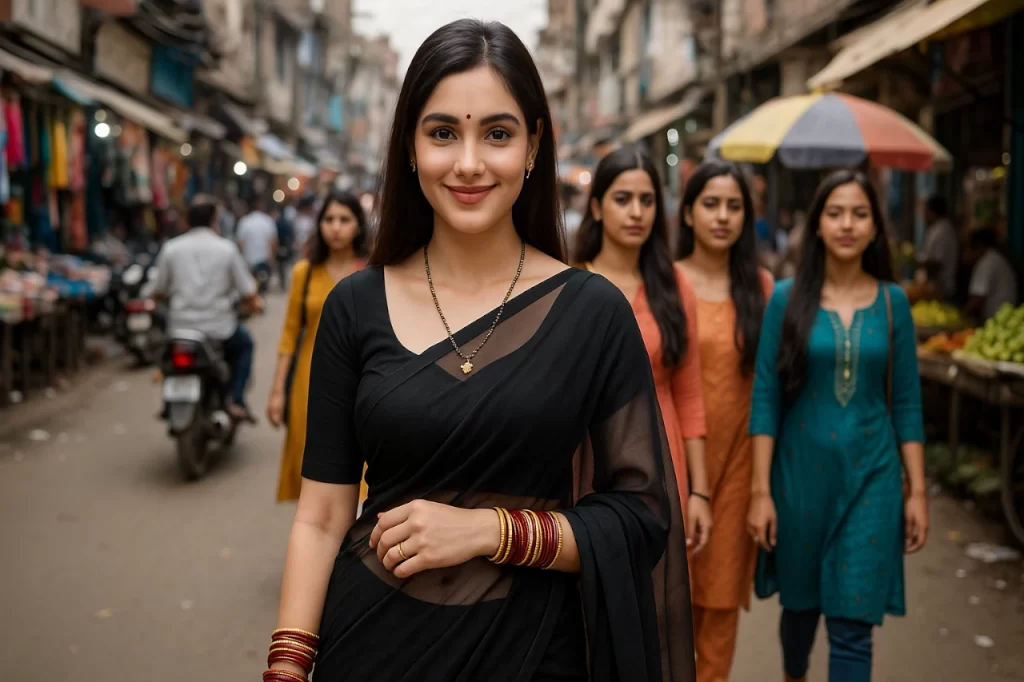
🔵 Granular Sectional Breakdown
🏰 Architectural Marvels in Darbhanga: A Granular Exploration of Mithila’s Built Heritage
Darbhanga’s architectural landscape embodies a living chronicle of power, devotion and artistic synthesis, spanning from 16th-century royal complexes to colonial-era innovations and sacred spaces built upon mythic foundations. As the cultural heart of Mithila, the city showcases seven distinct architectural traditions through its monumental structures:
🔘 Darbhanga Fort (Rambagh Palace): Indo-Saracenic Citadel of Power
➨ Location & Scale: 85-acre fortified complex in city centre, walls extending 5.8 km.
➨ Architectural Fusion:
➸ Rajput Elements: Jharokha balconies with Stone Jalis (perforated screens) for Royal Women to observe courtyards unseen.
➸ Mughal Influences: Cusped arches and Chattris (Domed Kiosks) framing the entrance gate, inspired by Fatehpur Sikri’s Buland Darwaza.
➸ Engineering Marvel: Western wall deliberately left unfinished during construction (1946–47) as India gained independence – a symbolic “Incomplete legacy” of colonial transition.
➨ Interior Wonders:
➸ Silver Bed Chamber: 92% pure silver four-poster bed (187 kg) with ivory-inlaid floral motifs.
➸ Kankali Temple: Tantric shrine with blood-red walls where animal sacrifices (Bali) occur during Kali Puja, using 17th-century ceremonial daggers.
🔘 Shyama Kali Temple: Sacred Geometry on Mortal Ashes
➨ Foundational Paradox: Built directly atop the cremation pyre of Maharaja Rameshwar Singh (1933), blending mortality and divinity.
➨ Spatial Symbolism:
➸ Central Sanctum: 8-foot black stone Kali idol flanked by Mahakal (Shiva) and Ganesha, positioned on exact cremation coordinates.
➸ Six Satellite Temples: Arranged in a mandala pattern around a Kund (Tank) fed by seven channels representing sacred rivers.
➸ Tantric Infrastructure: Underground chambers (Guhasana) for midnight rituals, accessible only to initiates via hidden staircases.
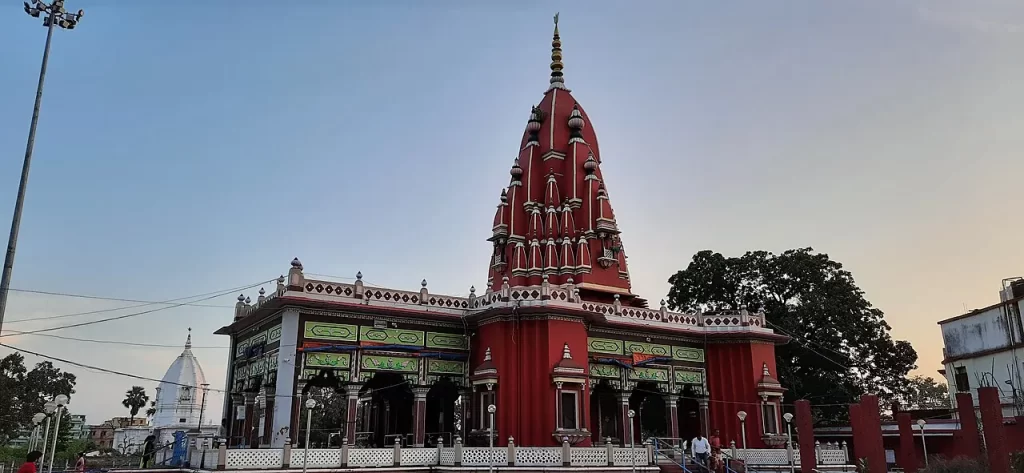
🔘 Nargona Palace: Seismic-Resistant Renaissance
➨ Post-Earthquake Innovation:
Rebuilt after 1934 Bihar earthquake as India’s first quake-proof structure with three revolutionary features:
➸ Foundation: Floating raft base with sand cushioning.
➸ Walls: Reinforced concrete core with brick facing.
➸ Cornices: Flexible iron rod mesh within plasterwork.
➨ Cultural Transformation:
Now houses Kameshwar Singh Darbhanga Sanskrit University, where students chant Vedic hymns in Belgian glass-mirrored halls beneath teakwood ceilings.
🔘 Maharaja Laxmiswar Singh Museum: Colonial-Era Treasury
➨ Architectural Layout: Indo-Gothic structure (1878) on Mansarovar Lake’s eastern bank, featuring 11 thematic galleries.
➨ Notable Artefacts:
➸ Hall 1: Gold-silver royal throne with 1,842 ivory-inlaid petals (each 3.2 cm), forming the Royal Emblem Makara (Mythical Fish).
➸ Hall 3: Greek-style marble table (2.1m diameter) carved from single stone, depicting diaphanous-draped women with wind-blown textile realism.
➸ Ivory Gallery: Chess set with pieces representing Ramayana characters, used by Maharaja Kameshwar Singh during strategic consultations.
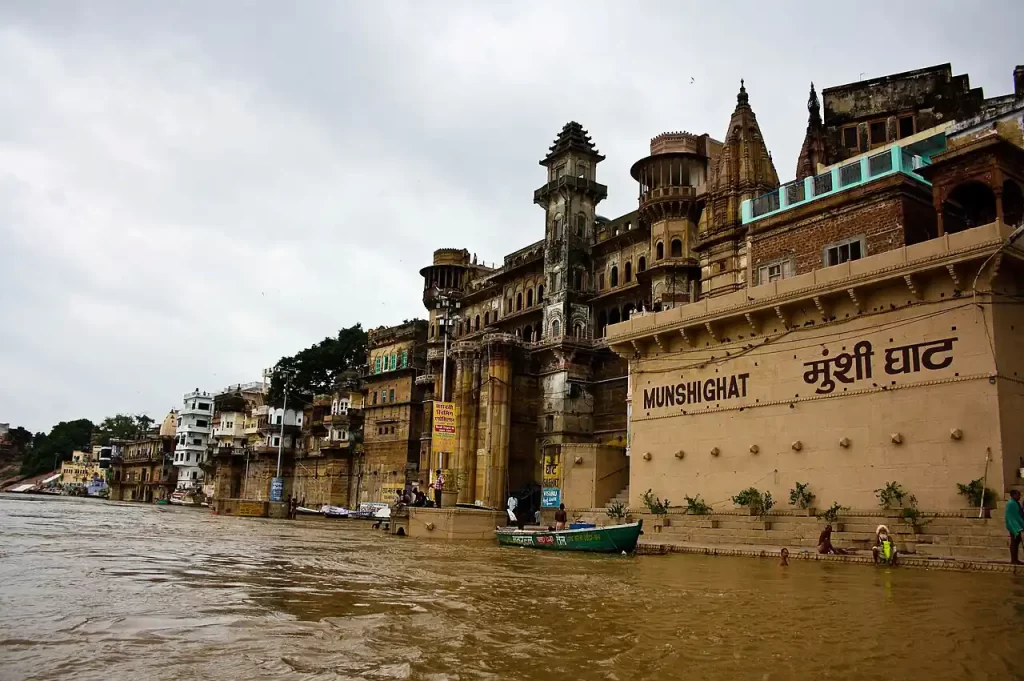
🔘 Ahilya Sthan: Mytho-Architectural Resonance
➨ Ramayana Embodiment: Site where Lord Rama transformed cursed Ahalya from stone to human, marked by:
➸ Footprint Stone: 45×32 cm granite slab with carved footprints, revered as Sita’s imprint.
➸ Gautam Kund: Ritual tank with seven spring sources, believed formed by Brahma’s arrows.
➨ Temple Architecture:
➸ Main Shrine: Panchayatana style (central temple with four subsidiaries) built under Maharaja Chhatra Singh (1635).
➸ Carved Narratives: Door jambs depicting 12 scenes from Ahalya’s liberation myth.
🔘 Anandbagh Palace: Botanical-Architectural Synthesis
➨ Mughal Garden Integration:
➸ Char Bagh Layout: Quadrant gardens with 283 plant species mentioned in Sanskrit texts.
➸ Water Symphony: Cascading channels connecting 12 fountains to underground reservoirs.
➨ Structural Hybridity:
➸ European Elements: Victorian cast-iron staircases and Doric columns.
➸ Maithili Motifs: Ceiling frescoes showing Madhubani-style Kohbar ghar (Nuptial chamber) designs.
🔘 University Campuses: Colonial Scholastic Estates
➨ Lalit Narayan Mithila University:
➸ Adaptive Reuse: Converted stables now house chemistry labs, retaining original hay chutes as ventilation shafts.
➸ Astronomical Features: Sundial courtyard aligned for equinox shadows to mark examination periods.
➨ Darbhanga House (Patna Branch):
➸ River-Integrated Design: Ganges-facing Ghats with stepped libraries where students study on sandstone platforms.
➸ Kali Temple: 150-year-old shrine with tantric Yantras etched into silver doors.

🔘 Kusheshwar Asthan: Ecclesiastical Ecology
➨ Temple-Bird Sanctuary Symbiosis:
➸ Kusheshwar Nath Temple: 12th-century sandstone shrine with 28 carved avian motifs predicting local species.
➸ Architectural Hydrology: Step-wells designed as dual-purpose ritual baths and bird watering holes.
➨ Conservation Architecture: Community-built mud nests for endangered Siberian cranes integrated into temple compound walls.
🔘 Colonial Public Works: Engineering Benevolence
➨ Maharaja’s Railway (1885):
➸ Darbhanga Station: Italianate clock tower with mechanical clock still wound manually every 72 hours.
➸ Engineering Altruism: 0.5° gradient tracks designed for bullock carts to easily cross – a “transitional technology” consideration.
➸ Waterworks: Filtration tanks using indigenous Khus Grass layers, supplying 19 public fountains.
🔘 Sacred Secularism: Interfaith Architectural Dialogue
➨ Mazar of Makhdoom Baba:
➸ Sufi Syncretism: Qibla wall aligned toward Shyama Temple, enabling simultaneous prayer directions.
➸ Material Blending: Hindu Kalasha finials atop Islamic dome.
➨ Holy Rosary Church:
➸ Earthquake Adaptation: Original 1891 bungalow-style church rebuilt with reinforced apse after 1934 quake.
➸ Cultural Hybridity: Stained glass depicting Sita’s exile beside Christ’s parables.

📜 Architectural Evolution Timeline
| Period | Key Developments | Extant Examples |
| Pre-16th C. | Balirajgarh Brick Fortifications (2nd C. BCE) | Excavated foundations |
| 1600–1750 | Ahilya Sthan Temple complex | Gautam Kund Tanks |
| 1830–1901 | Rambagh Palace Phase I; Anandbagh Gardens | Mughal Terraces |
| 1933–1938 | Post-quake Reconstruction (Nargona) | Seismic Joints |
| Post-1947 | Adaptive Reuse as Educational Institutions | University Libraries |
Darbhanga’s Architecture manifests as “Stone Scriptures” where Rajput Chhatris converse with Gothic Arches and Tantric Temples cast shadows over bird sanctuaries. This living heritage continues to evolve – the upcoming AIIMS campus reportedly integrates Maithili Aramana (Verandah) designs with modern hospital planning, ensuring architectural traditions remain vibrantly relevant. As local artisan Ram Kishore Das observes: “Our palaces breathe through their stone jaalis – each perforation tells a story of kings who built not just for grandeur, but for breeze to cool the common man waiting in courtyards”.

🏛️ Where to Stay in and near Darbhanga, Bihar: A Comprehensive Guide
Darbhanga, the cultural and historical heart of Mithila, offers diverse accommodations catering to luxury seekers, budget travellers, pilgrims, and business visitors. Drawing from local insights, seasonal patterns, and infrastructural nuances, here’s a granular breakdown:
➤ Luxury Stays: Heritage Palaces and Modern Resorts
➨ DALAAN RESORT
➸ Rates: ₹3,500 – ₹5,500/night
➸ Location: Tola-Chikni, Bahadurpur (24 km from city centre).
➸ Facilities: Swimming pool, spa, jacuzzi, pet-friendly policy, and airport transfers.
➸ Dining: “Machan Restaurant” serves Bihari thalis (₹300) and seasonal makhana dishes.
➸ Seasonal Tip: Winter (October–February) is ideal; monsoon (July–September) offers lush views but risks road flooding.
➨ Hotel Meena Aurum Inn
➸ Rates: ₹2,400 – ₹3,000/night
➸ Location: VIP Road, Laheriasarai (8.7 km from airport).
➸ USP: Rooftop dining with Litti Chokha platters (₹180).
➸ Check-in: 12 PM; late checkout until 2 PM (₹500/hour extra).
➤ Mid-Range Comfort: Business and Family Hotels
➨ The Imperial Hotel & Restaurant
➸ Rates: ₹1,800 – ₹2,700/night
➸ Location: Alalpatti, Laheriasarai (7.6 km from airport).
➸ Facilities: Conference halls, AC rooms, free Wi-Fi.
➸ Food: Breakfast included; try their Kadhi-bari (Chickpea Dumplings in Yogurt Gravy, ₹120).
➨ Hotel GV Heritage
➸ Rates: ₹1,200 – ₹1,800/night
➸ Location: Benta Chowk, Laheriasarai (near Darbhanga Junction).
➸ Unique Feature: Rooftop views of Rambagh Palace.
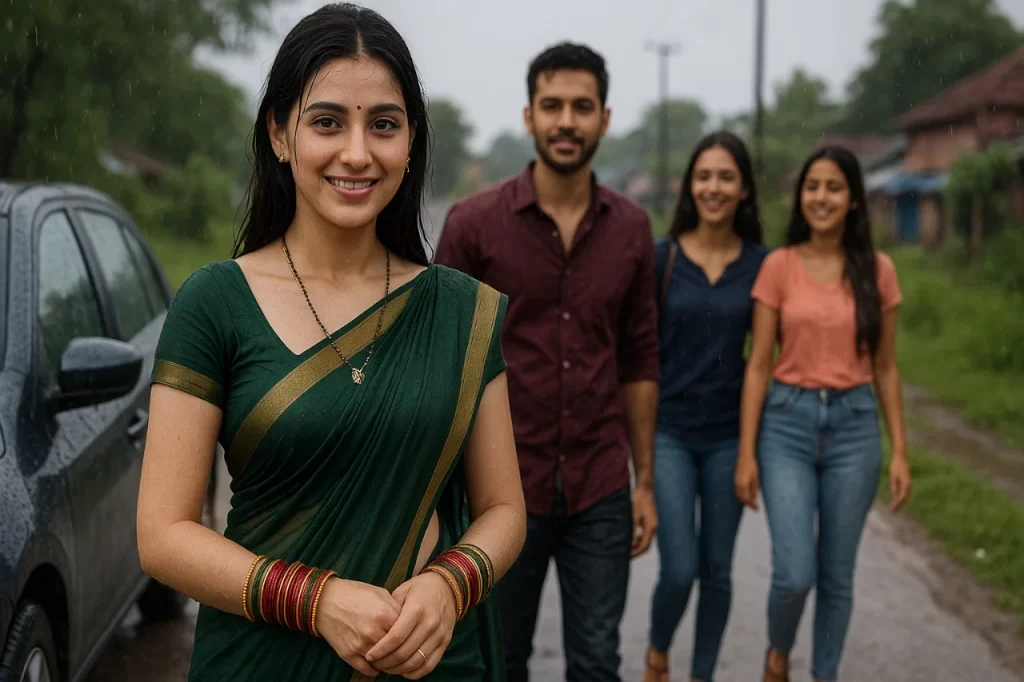
➤ Budget & Guesthouses: Backpacker Hubs
➨ Super Hotel O Darbhanga
➸ Rates: ₹600–₹900/night
➸ Location: Opp. Uma Cinema Hall, Khanka Chowk (3 miles from airport).
➸ Facilities: 330-sq-ft AC rooms, free Wi-Fi, continental breakfast (₹99 extra).
➨ Hotel Shree Krishna Residency
➸ Rates: ₹800 – ₹1,200/night
➸ Location: Near C.M. Science College, Bada Bazar.
➸ USP: Homemade Maithil cuisine (makhana kheer ₹70).
➤ Religious Stays: Dharamshalas and Spiritual Retreats
➨ Gautam Kund Dharamshala
➸ Rates: Donation-based (suggested ₹200/night)
➸ Location: Ahilya Asthan, Kamtaul.
➸ Facilities: Communal kitchen, temple access, basic cots.
➸ Pilgrim Perk: Proximity to Gautam Ashram; free guided sunrise rituals.
➨ Shyama Temple Dharamshala
➸ Rates: Free (priority for temple devotees)
➸ Facilities: Shared bathrooms, vegetarian meals (lunch thali ₹50).
➤ Proximity Insights: Location vs. Accessibility
➸ Near Airport: Mango Tree Hotel (8-min walk; ₹2,000/night) suits transit travellers.
➸ City Centre: Hotel Dwarka Palace (Kachahari Chowk; ₹1,900/night) steps from markets.
➸ Quiet Zones: DALAAN RESORT (rural serenity) vs. Hotel Rama Residency (urban convenience).
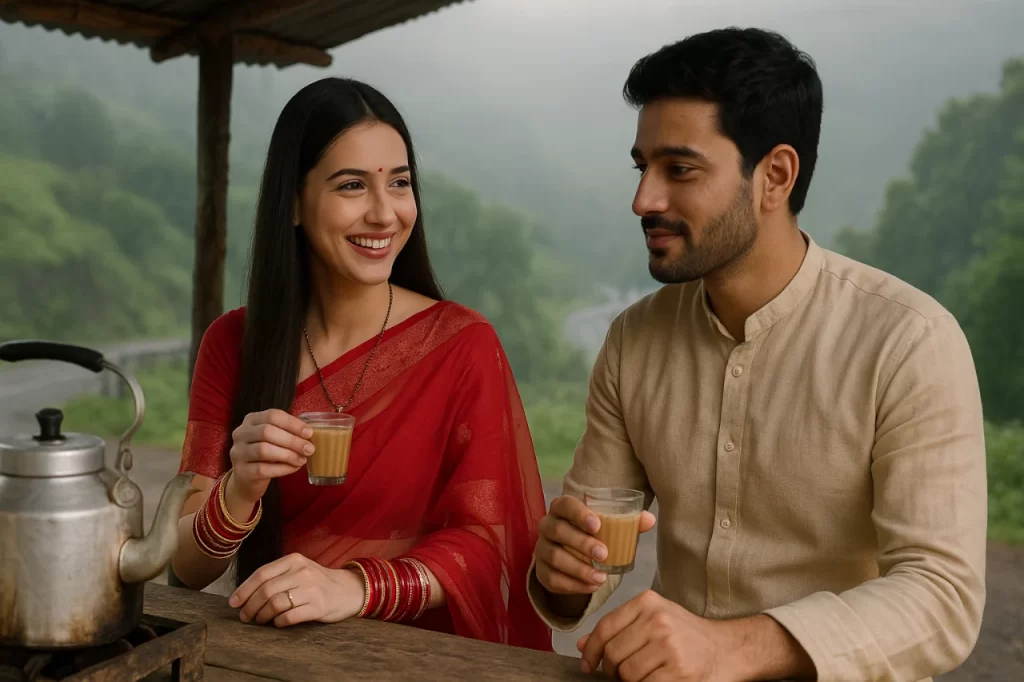
➤ Seasonal Considerations
➸ Winter (October–February): High demand; book 15 days ahead. Temperatures: 8°C – 25°C.
➸ Monsoon (July–September): Flood-prone areas (e.g., Biraul Block) disrupt road access; avoid budget stays near marshlands.
➤ Cultural Immersion Stays
➸ Heritage Home-stays: Converted zamindar mansions in Laheriasarai (e.g., The Odd Company; ₹1,899/night) offer Maithil folk music nights.
➸ Village Stays: Kusheshwar Asthan’s bird-sanctuary-adjacent huts (₹500/night) include boat rides.
➤ Booking Tips from Locals
👉 “Avoid June weddings—hotels hike rates by 200% for peak season. For dharamshalas, carry mosquito nets and confirm kitchen access during Navratri” – Rajesh Jha, Tour Guide, Darbhanga Tourism Cell.
🛎️ Key Takeaways: Darbhanga’s stays blend royal legacy, spiritual simplicity, and modern comfort. Prioritize locations aligned with your itinerary: pilgrims near Ahilya Asthan, business travellers in Laheriasarai, and nature lovers at Kusheshwar Asthan. For real-time deals, cross-check rates on MakeMyTrip (mid-range) and OYO (budget).
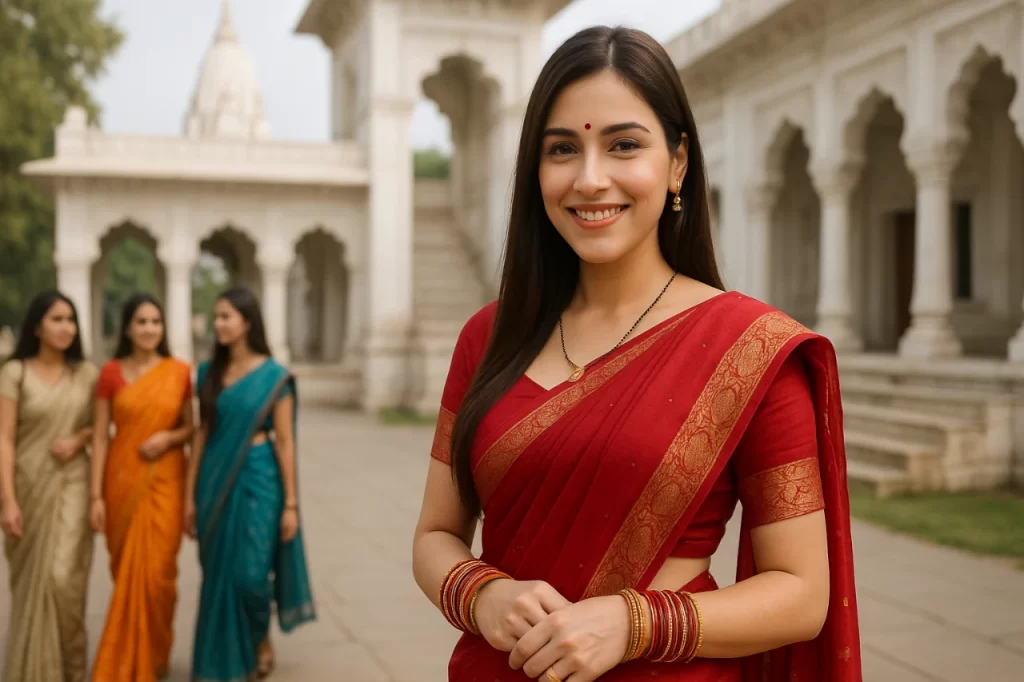
🌿 Best Places to Visit in Darbhanga, Bihar: A Granular Exploration
Darbhanga’s landscape weaves together Spiritual Sanctuaries, Royal Legacies and Ecological wonders, each site offering a distinct narrative of Mithila’s soul. Below is a meticulously detailed guide to its most compelling destinations:
🕉️ 1. Shyama Kali Temple Complex: Where Divinity Meets Royal Mortal Remains
🌏 Location: Lalit Narayan Mithila University campus, 1 km west of Darbhanga Junction.
➤ Key Features:
➨ Sacred Topography: Built atop the cremation pyres of the Darbhanga Raj royals, with the Main Temple (1933) marking Maharaja Rameshwar Singh’s ashes. The black-stone Kali idol towers at 8 feet, clutching a sword and severed head.
➨ Architectural Ensemble: Six temples encircle a central pond fed by “Seven Sacred Rivers”. Notable structures include:
➸ Madhaveshwar Mahadev Temple (1806): Bengal Chala-style Shiva shrine with red-white motifs.
➸ Rudreshwara Kali Temple: Oldest in the complex, dedicated to Maharaja Rudra Singh.
➨ Tantric Practices: Underground chambers host nightly tantric rituals; devotees offer red hibiscus and Gur (Jaggery) for wish fulfilment.
➤ Visitor Tips:
➸ Timings: 5 AM – 9 PM; Mangala Aarti at 4:30 AM.
➸ Festivals: Navratri (October) sees 50,000+ pilgrims daily. Avoid photography during Sandhya Aarti.
🦢 2. Kusheshwar Asthan Bird Sanctuary: Wetland Wonderland
🌏 Location: 45 km east of Darbhanga city (Kusheshwar Asthan block).
➤ Ecological Significance:
➨ Habitat: 7,019 acres of waterlogged marshes across 14 villages, declared a sanctuary in 1972.
➨ Migratory Spectacle (November–March): Hosts 15+ endangered species:
➸ Siberian Crane: 20–30 annual visitors (Critically Endangered).
➸ Dalmatian Pelican: Only 665–1,000 pairs globally.
➤ Experiences:
➸ Boat Safaris: Rowboats (₹200/hour) navigate Chours (Marshes); dawn tours maximise sightings.
➸ Kusheshwar Nath Temple: 12th-century Shiva Lingam where pilgrims feed red lentils to sacred doves.
➤ Logistics:
➸ Access: Hire autos from Hasanpur Road station (22 km). Carry binoculars and waterproof boots.
🏛️ 3. Maharaja Laxmiswar Singh Museum: Treasures of the Raj
🌏 Location: Mansarovar Lake’s eastern bank, 1 km southwest of Darbhanga Junction.
➤ Collections & Architecture:
➸ Hall 1: Gold-silver royal throne with ivory-inlaid floral motifs and the royal emblem “Fish”; Tipu Sultan’s elephant Hauda (Howdah).
➸ Hall 3: Greek-inspired marble table depicting diaphanous-draped women, carved from a single stone slab.
➸ Ivory Gallery: Furniture commissioned by Maharaja Kameshwar Singh, including a chess set with Maithil folklore motifs.
➤ Visitor Info:
➸ Timings: 10 AM – 3:30 PM (closed Mondays). Free entry.
➸ Hidden Gem: Ask curators to unlock the textile gallery’s “Tantra Yantra” scrolls used in royal rituals.
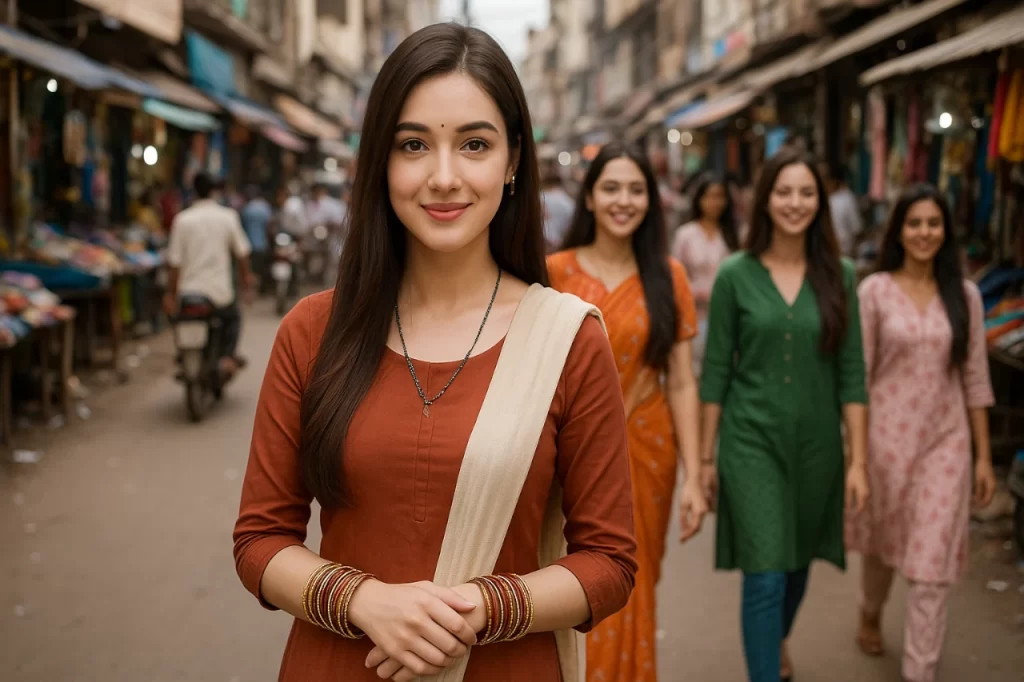
🌳 4. Ahilya Asthan: Ramayana’s Stone-to-Woman Saga
🌏 Location: Ahilya Gram, 3 km south of Kamtaul Railway Station (Jale block).
➤ Mythological Roots:
➸ Sacred Stone: Footprint-marked stone venerated as the petrified Ahalya, transformed by Lord Rama’s touch.
➸ Gautam Kund: Tank created by Lord Brahma’s arrows, where devotees bathe to cleanse sins.
➤ Cultural Practices:
➸ Festivals: Vivah Panchami (November/December) reenacts Rama-Sita’s wedding with processions and Bhajans.
➸ Offerings: Widows Place Sindoor and Mango leaves at Ahalya’s stone for marital blessings.
➨ Nearby: Brahmpur village (8 km) sells medicinal herbs from Gautam Rishi’s herbal gardens.
🏰 5. Darbhanga Fort & Palaces: Indo-Saracenic Splendor
➤ Rambagh Palace (Fort):
➸ Architecture: 85-acre complex blending Rajput Jharokhas and Mughal arches. The unfinished western wall symbolises India’s 1947 independence.
➸ Kankali Temple: Tantric shrine with Blood-red walls; Animal Sacrifices (Bali) permitted during Kali Puja.
➤ Nargona Palace:
➸ Seismic Innovation: Built post-1934 earthquake with shock-absorbing basements—India’s first quake-resistant structure.
➸ Current Use: Part of Kameshwar Singh Sanskrit University; students chant Vedic hymns in its marble courtyards.
🖼️ 6. Chandradhari Museum: Mithila’s Cultural Archive
🌏 Location: Northern shore of Mansarovar Lake.
➤ Galleries of Note:
➸ Madhubani Pavilion: 17th-century Kohbar Ghar (Nuptial Chamber) paintings showing Ramayana episodes.
➸ Arms & Armory: Katar (Dagger) used by Raja Lorik in the Battle of Newri (1590).
➨ Critique: Paintings suffer humidity damage; visit mornings for curator-led tours explaining Aripana (Ritual Floor Art).

⛩️ 7. Nawadah Durga-sthan & Minor Shrines
➸ Nawadah Durga-sthan: 10-foot Swayambhu (Self-manifested) Durga idol near Majkora. Dussehra features 10,000 oil lamps.
➸ Manokamna Temple: Marble Hanuman shrine where students pray before exams; offer Laddoos (₹10).
➸ Mazar of Makhdoom Baba: Sufi shrine where Hindus tie Threads and Muslims offer Chadars.
🌾 8. Rural Gems: Folk Art & Agrarian Traditions
➸ Laheriasarai Market: Buy Sikki Grass baskets shaped like turtles (symbols of fertility) and Malda mangoes (May–July).
➸ Brahmpur Khadi Centre: Watch weavers create Gamcha towels using natural dyes like Palash flowers.
🎒 Visitor Toolkit
| Site | Best Time | Guided Tours | Local Transport |
| Kusheshwar Sanctuary | Nov–Feb (6–10 AM) | Birdwatching Bihar (₹500) | E-rickshaw from Hasanpur (₹300) |
| Shyama Temple | Oct–Mar (Before 7 AM) | University History Dept. (free) | Cycle-rickshaw from Station (₹20) |
| Ahilya Asthan | Vivah Panchami (Nov) | Priests narrate Ramayana (Donation-based) | Kamtaul Station shared Auto (₹50) |
💡 Insider Tip: “For Shyama Temple, avoid Thursdays—tantric rituals close the inner sanctum. At Kusheshwar, bribe boatmen with Bidi (Tobacco) for Pelican-spotting!” – Rakesh Thakur, Darbhanga Heritage Guide.
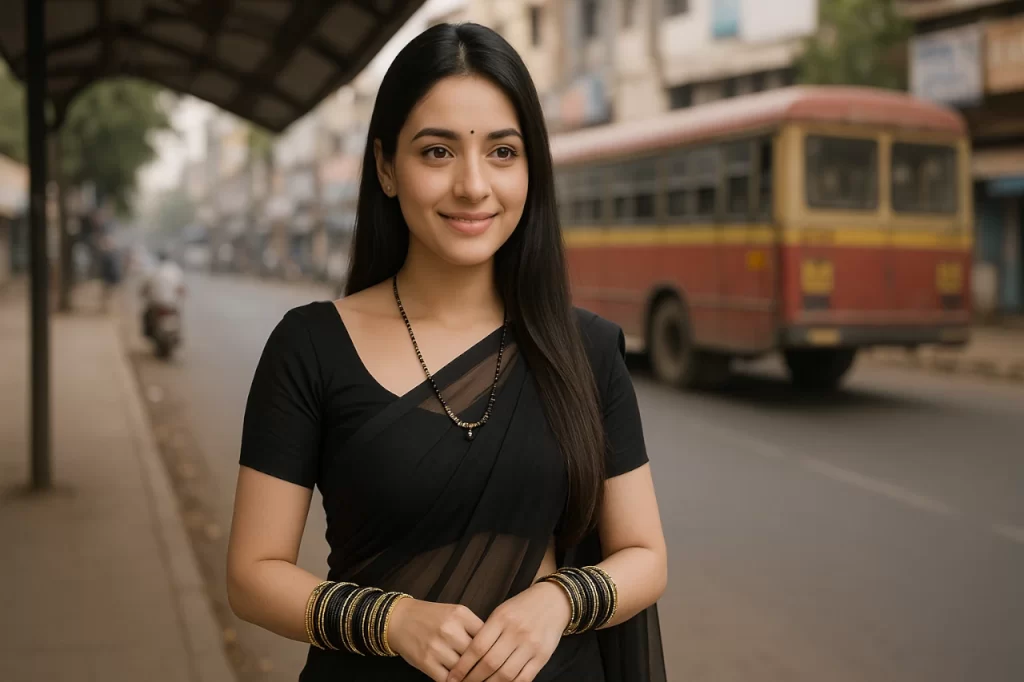
🚉 How to Reach Darbhanga, Bihar: Granular Travel Guide from Major Indian Cities
✈️ 1. Air Connectivity: Modern Gateway to Mithila
Darbhanga Airport (DBR) operates as a Civil Enclave within the Indian Air Force Station, located 6 km from the city centre near NH 527B.
➨ Key Routes & Airlines:
➸ Delhi: IndiGo (3 daily flights, 1h 40m, ₹5,500 – ₹18,000)
➸ Mumbai: SpiceJet via Delhi (5h 22m, ₹7,500+) or direct (2h 30m, ₹8,500 – ₹21,000)
➸ Kolkata: Direct flights (1h 45m, ₹3,500 – ₹12,000)
➨ Airport Transfers: Prepaid taxis (₹150 – ₹300) and SMK Ride cabs (₹200 – ₹500) available 24/7. Auto-rickshaws charge ₹50–₹100 to the city centre.
➨ Pro Tip: Flight prices surge 40% during Chhath Puja (October-November) and Ram Navami (March-April). Book 60+ days early via MakeMyTrip or airline apps.
🚂 2. Rail Network: Lifeline of North Bihar
➨ Darbhanga boasts two major stations:
1. Darbhanga Junction (DBG): Hub for long-distance trains
2. Laheriasarai (LSI): Connects south Darbhanga and nearby districts
➨ Table: Key Train Routes & Travel Times
| Origin City | Train Name & Number | Frequency | Approximate Duration | Approximate Fare (3AC) |
| Delhi | Mithila Express (14055) | Daily | 20h 30m | ₹ 1,300 |
| Kolkata | Garib Nawaz Express (15669) | Daily | 16h 15m | ₹ 1,100 |
| Mumbai | Lokmanya TT Express (11044) | Weekly | 34h 20m | ₹ 1,800 |
| Chennai | Sanghamitra Express (12295) | Bi-weekly | 42h | ₹ 2,100 |
| Ahmedabad | Sabarmati Express (19167) | Tri-weekly | 38h | ₹ 1,950 |
➸ Booking: Use IRCTC website/app. Tatkal tickets open 10 AM daily.
🚌 3. Roadways: Highways & Bus Services
➨ Darbhanga sits at the crossroads of Three National Highways:
➸ NH 27 (East-West Corridor): Connects Porbandar (Gujarat) to Silchar (Assam)
➸ NH 527B: Links Darbhanga to Jhanjharpur
➸ NH 57: Direct route to Patna
➨ Bus Services from Key Cities:
➸ Patna (145 km): Gaurav Luxury AC buses (every 30 min, 4h, ₹350). Night sleeper buses (₹500).
➸ Kolkata (550 km): SBSTC non-AC (daily, 14h, ₹900)
➸ Varanasi (320 km): Private Volvos (5/day, 7h, ₹650)
🚗 4. Self-Drive & Taxi Routes
➸ Delhi to Darbhanga (1,150 km): NH 19 via Agra–Varanasi–Muzaffarpur (14h 2m). Toll: ₹1,800.
➸ Kolkata to Darbhanga (550 km): NH 19 via Asansol–Patna. Total Travel cost (Includes Fuel & Toll): ~₹5,500 (SUV).
➨ Taxi Services: SMK Ride offers:
➸ Hatchbacks (₹10/km)
➸ SUVs (₹20/km)
➸ Book via app or call: 99xxxxxx91
🌤️ 5. Seasonal Travel Considerations
🌧️ Monsoon (July-September): Avoid road travel – NH 27 near Kamala River floods. Trains usually get delayed by 3-6 hrs.
☁️ Winter (October-February): Ideal for travel. Train fog alerts common December-January (use Garib Rath – fewer delays).
☀️ Summer (March-June): AC travel essential. Carry electrolytes – temperatures hit 43°C.
⚡ 6. Inter-District Connectivity
⦿ Madhubani (28 km): Shared autos (₹50, 1h) from Laheriasarai Station.
⦿ Samastipur (40 km): Local trains (hourly, ₹35, 45m).
⦿ Sitamarhi (75 km): Bihar State Tourism buses (₹120, 2h 30m).
🛺 7. Last-Mile Transport within Darbhanga
| Mode | Fare Range | Key Routes |
| E-Rickshaw | ₹10 – ₹40 | Station to Shyama Temple (1 km) |
| Cycle Rickshaw | ₹20 – ₹80 | Airport to Rambagh Palace (8 km) |
| SMK Ride Cabs | ₹50 – ₹200 | City center to Kusheshwar Asthan (45 km) |
⦿ Night Travel: 30% surcharge after 10 PM. Pre-book via SMK app.
🧭 8. Pro Tips from Locals
👉 “For bird sanctuary trips, take the 6 AM Hasanpur Road Passenger Train from Laheriasarai (₹15). Boatmen at Kusheshwar give 50% discount if you show train tickets!” – Rajiv Kumar, Darbhanga Transport Operator
➸ Pilgrim Hack: Auto unions near Ahilya Sthan offer combined tickets for Gautam Kund + Brahmpur (₹200 all-day).
➸ Airport Check-In: Arrive 2+ hours early – security bottlenecks during festival seasons.
♿ 9. Accessibility for Special Needs
➸ Trains: Book wheelchair services via IRCTC (24h advance). Darbhanga Junction has ramps to Platforms 1-3.
➸ Airport: Priority boarding for seniors – request at check-in counter.
➸ Roads: SMK Ride provides Innova Crysta with hydraulic lifts (book 48h ahead; call 99xxxxxx91).
🧳 10. Emergency Contacts
⦿ Rail Enquiry: 139
⦿ SMK Ride 24/7 Support: 99xxxxxx91
⦿ Darbhanga Tourist Helpline: 1800-345-3204 (5 AM – 11 PM)
👉 Key Takeaways: Darbhanga’s Air-Rail-Road Triad offers seamless access. Opt for trains from Delhi/Kolkata, flights from Mumbai/Hyderabad, and AC buses from Patna. For niche destinations like Kusheshwar Asthan, combine trains with local autos. Avoid monsoon road travel – track NH 27 floods via @darbhanga.nic.in/alert.

🍽️ Best Places for Refreshments with Authentic Local Food in Darbhanga, Bihar
Darbhanga’s culinary landscape is a vibrant tapestry of Mithila Traditions, Royal Legacies and Street-food innovation. From smoky Litti Chokha to decadent Malpua, here’s a granular guide to savouring the city’s soul:
⛔ Street Food Hubs: Rustic Flavours & Heritage Recipes
🎯 Laheriasarai Market:
➸ Litti Chokha: At Raju’s Cart near Town Hall, coal-fired Litti (₹30/pair) is stuffed with Sattu (Roasted Gram Flour), Mustard Oil and Mango pickle. Served with Baingan Chokha (Smoked Eggplant mash) and Chaas (Buttermilk). Historically a Magadh Empire soldier’s staple, now a Bihari icon.
➸ Sattu Paratha: Flaky parathas filled with spiced Sattu (₹40), best paired with tangy tamarind chutney at Shyam Stall.
🎯 Tower Chowk:
➸ Dhamaka Lassi: A 160-year-old institution serving creamy lassi (₹80) blended with Khoya (Milk Solids), Cashews and Fresh Cream. The Bhaang-infused variant is popular during Holi. Queues peak at 4 PM!
🎯 Kachahari Chowk:
➸ Maghai Paan: Paanwala Ram Singh crafts betel leaves with lime paste, cardamom, and cloves (₹20–₹50). Used in weddings for Sindoor Ki Gacchi rituals.
⛔ Thirst Quenchers: Traditional Beverages
🎯 Sattu ka Sharbat:
➸ Kalpana Ji’s Stall (Rambagh Palace Road): Savoury (Rock Salt) or Sweet (Jaggery) versions (₹15/glass). Farmers rely on this protein-rich drink to beat summer heat (up to 43°C).
➸ Thekua Sharbat: At Ahilya Asthan stalls, this sugarcane-juice blend with ginger and lemon (₹20) aids digestion during pilgrimages.
⛔ Sweet Sanctuaries: Mithila’s Dessert Legacy
🎯 KC Bakers (Station Road):
➸ Malpua: Deep-fried pancakes soaked in saffron syrup (₹120/half-dozen). Served hot during Diwali.
🎯 Madhubani Sweets (Bada Bazar):
➸ Khaja: Layered pastry drizzled with sugar syrup (₹100/box). A Vivah Panchami festival essential.
➸ Makhana Kheer: Foxnut pudding simmered in milk with cardamom (₹70/bowl).
⛔ Royal Dining: Heritage Restaurants
🎯 Beena Mansion (VIP Road):
➸ Bihari Thali (₹250): Includes Dal Pitha (Lentil Dumplings), Chana Ghugni (Spiced Chickpeas) and Laai (Jaggery-rice balls). Served in brass utensils evoking Raj Darbhanga feasts.
🎯 Level T – The Rooftop Lounge (Darbhanga Locality):
➸ Litti Chokha Platter (₹169): Artisanal Litti with three Chokhas (Potato, Tomato, Eggplant). Best enjoyed with sunset views of Nargona Palace.
⛔ Railway Station Eateries: Traveler’s Delight
🎯 RajBhog Khana (Darbhanga Junction):
➸ Mithila Thali (₹199): Jhal Muri (Puffed Rice Salad), Aloo Dum and Thekua. Order via WhatsApp (+9198XXXXX713) for seat delivery.
🎯 Local Vendors at Platform 3:
➸ Samosa Chaat (₹30): Topped with Yogurt, Tamarind Sauce and Pomegranate Seeds. Served on Banana leaves.
⛔ Modern Twists: Fusion & Fast Food
🎯 Café On 8 (Laheriasarai):
➸ Sattu Burger (₹189): Whole-wheat bun with Sattu Patty, Mint Chutney and Pickled onions.
➨ Swiggy Delivery Favourites:
➸ Paneer Angara from Level T (₹269): Charred cottage cheese in spicy gravy.
➸ Veg Hyderabadi Biryani from Biryani By Kilo (₹389): Dum-cooked with saffron rice.
⛔ Seasonal & Festival Specials
➨ Chhath Puja (October–November):
➸ Thekua & Rasiya (Jaggery Kheer) sold at Gautam Kund stalls. Devotees offer these to the sun god.
➨ Ram Navami (March–April):
➸ Tilkut & Chena Murki at Rajasthan Bhaj Govindam (₹150/box). Made with sesame and cottage cheese.
⛔ Pro Tips from Locals
👉 “Avoid June–July for street food—monsoon humidity affects freshness. At Dhamaka Lassi, whisper ‘Doodh Malai; for extra cream!” – Priya Kumar, Darbhanga Food Blogger.
➸ Budget: ₹50–300/meal.
➸ Hygiene: Look for FSSAI-certified stalls (blue sticker).
➨ Feast Map:
| Dish | Best Spot | Unique Trait | Price |
| Litti Chokha | Raju’s Cart, Laheriasarai | Coal-fired in clay Tandoor | ₹ 30 |
| Maghai Paan | Paanwala Ram Singh | Wedding Ritual Ingredient | ₹20 – ₹50 |
| Makhana Kheer | Madhubani Sweets | Saffron-infused, Served Cold | ₹ 70 |
| Bhang Lassi | Dhamaka Lassi Corner | 160-year-old recipe | ₹ 80 |
| Veg Hyderabadi Biryani | Biryani By Kilo (Swiggy) | Handi-cooked with Basmati Rice | ₹ 389 |
Embark on a culinary pilgrimage—where every bite echoes 500 years of Maithil heritage! 🌾
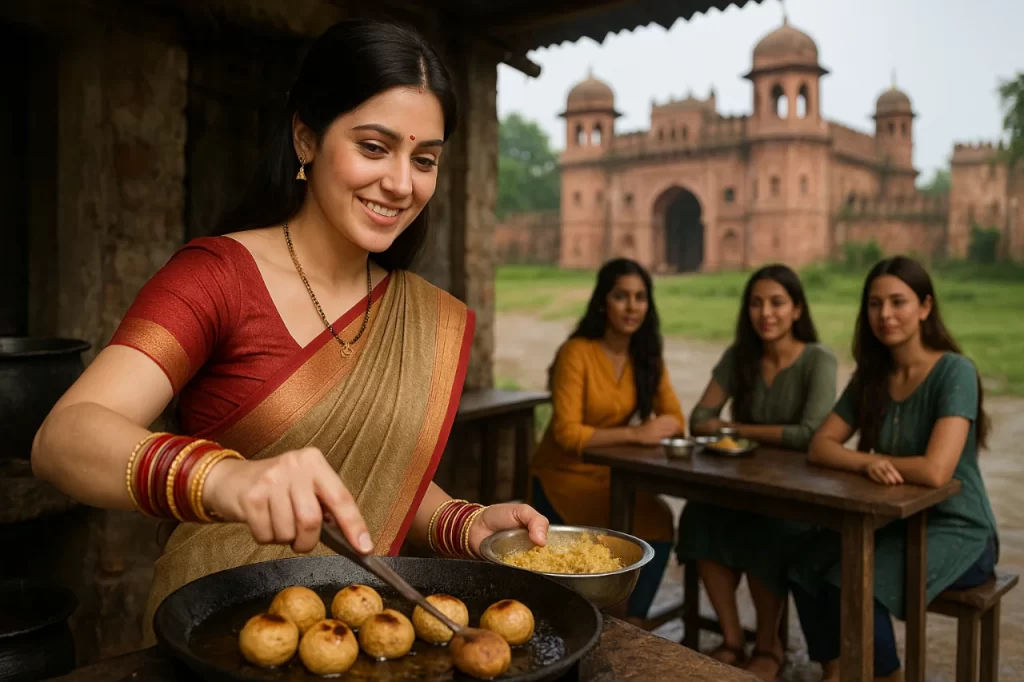
🌟 Complete List of Notable People
| Name | Profession | Notable Work |
| Kirti Azad | Cricketer / Politician | 1983 Cricket World Cup winner |
| Bhawana Kanth | IAF Pilot | India’s first female Fighter Pilot |
| H. C. Verma | Physicist | Author of Concepts of Physics |
| Imtiaz Ali | Filmmaker | Directed Jab We Met (2007) |
| Ram Gopal Bajaj | Actor / Thespian | Former NSD Director |
| Ritviz | Musician | Electronic Fusion Hits (Udd Gaye) |
☀️ Climatic Conditions
| Season | Months | Avg. Temp | Rainfall | Characteristics |
| Summer | March–June | 25°C – 43°C | Low | Dry heat; May peaks at 43°C. |
| Monsoon | July–September | 23°C – 33°C | 1,142 mm | 92% Annual Rain; Floods common. |
| Winter | October–February | 8°C – 25°C | Minimal | Foggy Mornings; Ideal for Tourism. |
🏘️ Talukas (Blocks) of Darbhanga District
➸ Darbhanga Sadar
➸ Benipur
➸ Biraul
➸ Jale
➸ Keoti
➸ Singhwara
➸ Tardih
➸ Bahadurpur
➸ Hayaghat
➸ Hanuman Nagar
➸ Kiratpur
➸ Kusheshwar Asthan (East)
➸ Alinagar
➸ Gaura Bauram
🏭 Industrial Development & Commercial Activities
⦿ Agriculture: Mango orchards (Malda variety), Makhana Cultivation, Fisheries.
⦿ Textiles: Handloom clusters producing Gamcha (Cotton Towels) and Madhubani sarees.
⦿ Food Processing: Sattu Mills, Mango Pulp Units, Rice Hullers.
⦿ Trade Hubs: Laheriasarai Market (Grains), Kachahari Chowk (Handicrafts).
⏳ Historical Timeline with Local Voices
➸ 1557: Mahesh Thakur establishes Darbhanga Raj under Mughal patronage.
➸ 1897: Maharaja Lakshmeshwar Singh builds railways and hospitals; “A model prince” — British Gazette.
➸ 1933: Shyama Kali Temple consecrated on royal cremation ground.
➸ 2020: Darbhanga Airport launches commercial flights.
➸ 2029 (Projected): Darbhanga Metro operational.
👂 Local Insight: “Our Ancestors Sang Vidyapati while planting paddy; today’s youth remix it as Mithila rap!” — Ramesh Jha, Maithili folklorist.
🏨 Hotel Directory with Facilities
| Property | Category | Rates (₹) | Check-in | Food Facilities |
| Hotel Meena Aurum Inn | Luxury | 4,425 | 12 PM | Multi-cuisine |
| The Imperial Hotel | Mid-range | 2,873 | 2 PM | Rooftop Dining |
| Super Hotel O Darbhanga | Budget | 2000 | 1 PM | Complimentary Breakfast |
| Gautam Kund Dharamshala | Religious | Donation | Flexible | Communal kitchen (self-cook) |
Note: Rates fluctuate during festivals (Durga Puja, Chhat). Book via [Booking.com].
🌾 “In Darbhanga, every stone tells a story, every meal feeds a legacy”. — Local Proverb
➤ FAQs
Why is Darbhanga called Bihar’s cultural capital?
Its patronage of Maithili Literature, Dhrupad Music and Madhubani art—preserved for 500+ years by Raj Darbhanga—earned this title.
What’s unique about Kusheshwar Asthan?
It’s both a Shiva Temple and Bird Sanctuary — home to 15+ migratory species like pintails from Siberia.
How to respect local customs?
Remove shoes at temples; avoid leather in sacred spaces. Dress modestly; seek permission before photographing rituals.
➤ Conclusion: The Eternal Embrace of Mithila
Darbhanga defies quick labels. It’s where Museum Gold gleams beside village looms, where Sanskrit Shlokas blend with Sufi Qawwalis. As AIIMS rises and metro tracks unfold, the city balances heritage with tomorrow. In the words of a temple priest: “We guard not stones, but stories”. Come write yours here.
➤ Sources:
➸ Wikivoyage: Darbhanga Travel Guide
➸ Joshua Project: Darbhanga Demographics
➸ District Administration, Darbhanga
➸ Encyclopædia Britannica – Darbhanga [britannica.com]
➸ Jhaji Store Food Blog [jhajistore.com]
Image Credit
➸ Wikimedia Commons – Darbhanga 1.jpg
➸ Wikimedia Commons – Darbhanga Raj Kila.jpg
➸ Wikimedia Commons – Shyama Mai Temple, Darbhanga
➸ Wikimedia Commons – Munshi, Darbhanga, Rana-Mahal Ghat 2011 July
For more information, you can visit our website: ExploreXP
🌾 Loved this journey through Mithila? Subscribe for more Bihar secrets!
Ready to walk through the “Door of Bengal”? Share your Darbhanga travel dreams here!
Latest Posts
- Explore Gadchiroli, Maharashtra: History, Architecture, Culture, Itineraries and Nature

- Exploring Mughalsarai: History, Culture, and Travel
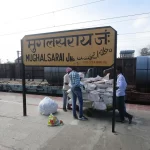
- Explore Katni, Madhya Pradesh: History, Culture, and Nature

- Ludhiana, Punjab, India – The Industrial Heartbeat with Timeless Heritage

- Unveiling Osmanabad (Dharashiv): Maharashtra’s Hidden Gem of History, Caves & Culture
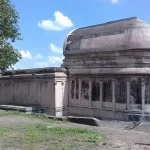
- Explore Sawantwadi: Maharashtra’s Hidden Gem of Heritage, Art, and Natural Splendour

